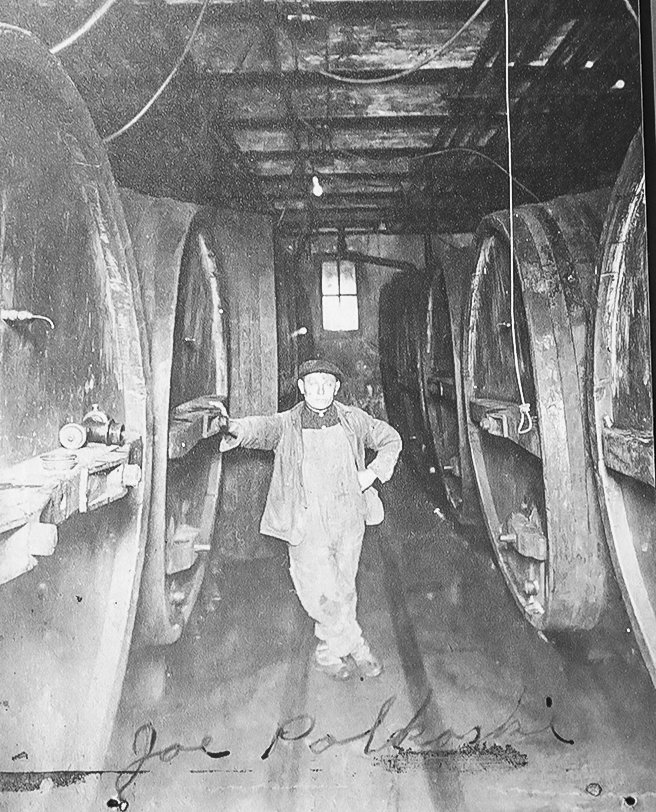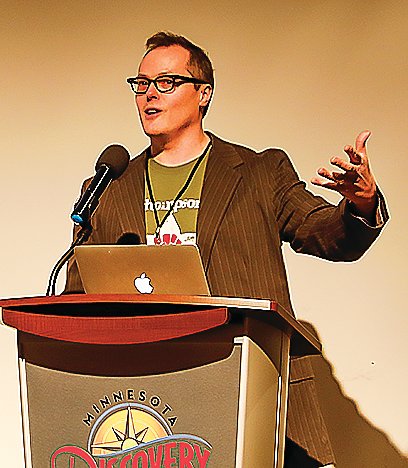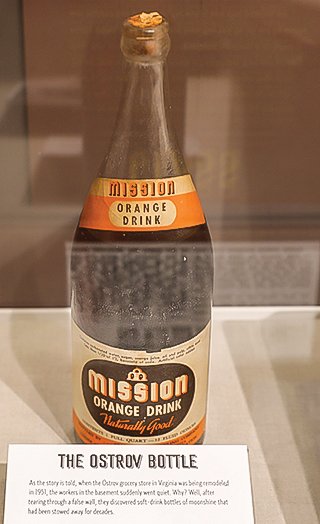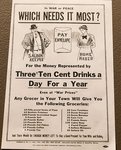Support the Timberjay by making a donation.
The Range was “Never Dry”
The region’s colorful Prohibition history on display at MN Discovery Center
CHISHOLM- If you think history is boring, pay a visit to the new temporary exhibit at the Minnesota Discovery Center (MDC) which examines a particularly colorful period of Iron Range history. “Never Dry: The Rise of Prohibition on the Iron Range” opened on Dec. 8 and will continue well into 2023.
The exhibit explores the impact of Prohibition, both before and after the implementation of the 18th amendment, on the Range. Areas of the Range became “dry” before the 18th Amendment went into effect in 1920, because of a rule enforcing no liquor sales on areas in what were called “Indian Territory” starting back in the mid-1850s. This left towns on the western end of the Range dry, while it was still legal to sell and drink alcohol in a neighboring town. After Oklahoma, Minnesota had the largest number of federal agents in the nation. Residents in St. Louis County voted to go dry in 1918. So, in many ways, Minnesota was a test case for Prohibition, and as the exhibit showed, it was not destined for success.
“Keen observers of what happened in Minnesota might have predicted how well drying out the nation would go,” wrote exhibit researcher Gary Kaunonen in an article published earlier in December in the Hometown Focus, “but any negative reports or reality-based assessments of Minnesota’s “dry regions” fell on deaf ears. The fervor of teetotaling progressive reformers, religious revivalists, and even anti-immigrant racists such as the Ku Klux Klan swept the goals of the 18th Amendment into federal law on Jan. 16, 1919.”
“This is a different and messier side of history,” said exhibit curator Allyse Freeman. “We are telling this history from the bottom up, focusing on the experiences of the working class and recent immigrants.”
Freeman said Prohibition in our area was nothing like the “Roaring 20s,” but there still was plenty of alcohol and bootlegging.
The exhibit highlights the “creativity and ingenuity” of Rangers as they found ways to produce and sell liquor during this time period, according to Kaunonen. You will also see stories of local residents both for and against Prohibition.
MDC researcher Jason Scorich was part of a team that assembled over 50 stories of bootlegging on the Range.
“We are sure there are more stories out there,” he said. “Please share yours with us.”
Many of these stories are available as part of the exhibit, some narrated by area residents, and others dictated and dramatized by Scorich. These oral histories include tales of traveling the Range with moonshine, and the creative ways this underground economy tried to keep one step ahead of law enforcement, sometimes successfully, other times not.
An immigrant baker in Hibbing baked bottles of his 120-proof moonshine inside loaves of bread.
“The feds found out and broke open all the loaves of bread set for delivery,” Scorich said. “But it was a Tuesday, and the booze only was delivered on Fridays!”
In 1951, when the Ostrov Grocery Store building in Virginia was being renovated, workers found a secret room in the basement. They found a trove of drink bottles, labeled “Naturally Good Orange Drink.” After opening and drinking a few, the workers passed out, the story goes. The exhibit features one of the two remaining still-corked bottles.
The exhibit highlights these stories, along with the history of what led to the passage of the laws, the anti-immigrant and anti-Native American biases that led many in the area to support the enactment of prohibition, and the stories of those who lobbied to have the law repealed.
Impacts on local businesses, families, and local governments, who lost the tax dollars generated from liquor sales, are also part of the story of prohibition on the Iron Range.
“This abrupt stop cut deep into the Range’s local economy,” said Kaunonen. “In 1900 alone, Virginia collected $12,470 in liquor license fees, along with $280 in liquor license application fees. In today’s dollars that is over $450,000. The next highest source of income for Virginia was municipal court fees at $2,700. This income, $12,750 from booze-related industry, accounted for over 60 percent of the city’s economy at the turn-of-the-century. Behind mining, alcohol was—by far—the Range’s second-largest economic driver.”
Newspaper clippings relate the crimes that occurred during the period, including some infamous murders. As well as stories of the more notorious law enforcement officials tasked to enforce the laws.
The largest moonshine bust in the northern half of the state took place at the home of Caleb Waymire on Stuart Lake back in 1931. His home brewing operation included seven vats, each large enough to make 10,000 gallons of moonshine. The exhibit gives visitors a glance at the ingenuity of illegal large-scale alcohol production, as well as the smaller stills and backyard or basement set-ups to produce liquor.
The exhibit opened on Dec. 8, preceded by a talk given by Duluth historian and book publisher Tony Dierckins about the history of brewing in northeastern Minnesota, which dated back to the second half of the 1800s starting in Duluth, then to Tower-Soudan and Virginia, with the opening of mining on the Iron Range. Beer at that time wasn’t always pasteurized, so local breweries sprung up in newly-settled areas. Prohibition caused almost all the local breweries to fail, except for Fitgers in Duluth, which managed to stay in business by producing non-alcoholic drinks.
A large crowd attended both the talk and the exhibit opening, including Joe Lopac, whose grandfather Mike Lopac of Mt. Iron was a bootlegger.
“I didn’t realize he had spent time in jail,” said Joe, as he stood in front of the still once owned by his grandfather. His grandfather used the still well into the 1960s, right until he died, said Joe. His grandfather used apricots to flavor his moonshine, which was quite popular.
The exhibit also includes stories of how the laws were enforced, the crime surrounding the illegal sale of liquor, and those who were both for and against outlawing alcohol, and the reasons why.
The exhibit is open during regular MDC winter hours, Tuesday-Saturday from 10 a.m. – 5 p.m., with extended hours and free admission after 3 p.m. on Thursday, when MDC is open until 8 p.m. MDC is closed on Sundays and Mondays. Learn more on their website at www.mndiscoverycenter.com.















